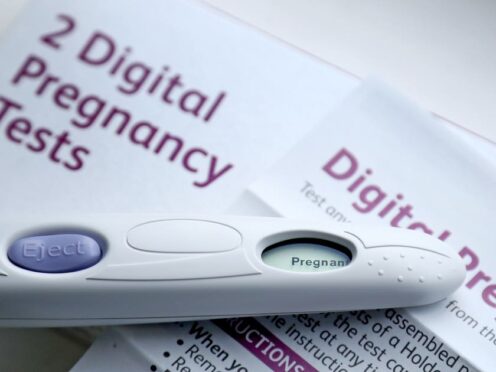The number of abortions for women living in England and Wales is at a record level, having risen by almost a fifth in a year.
There were 251,377 abortions for women resident in the two nations in 2022, official figures from the Department of Health and Social Care (DHSC) show.
This is the highest number since the Abortion Act was introduced almost 60 years ago and is a rise of 17% on the 2021 figure, the department said.
Abortion provider MSI Reproductive Choices said it believes pressures due to the cost-of-living crisis combined with a lack of access to contraception through stretched NHS services are both “playing a bigger role” in decisions to have an abortion.
Meanwhile, the British Pregnancy Advisory Service (Bpas) said a recent survey of theirs found that financial factors have either mainly or partly impacted the decision to end a pregnancy for almost six in 10 women, while a third said access to contraception remains a significant issue.
The 25-29 age group saw the biggest increase in abortion rates between 2012 and the latest figures for 2022, rising from 21.8 per 1,000 women to 31.4 per 1,000.
Taking both medications at home was the most common procedure, accounting for 61% of all abortions in 2022 – which was up nine percentage points since 2021, the DHSC said.
Temporary measures put in place during the pandemic approving the use of both pills for early medical abortion at home, without the need to first attend a hospital or clinic, were made permanent in England and Wales in 2022.
Sarah Salkeld, UK associate clinical director at MSI Reproductive Choices, said women are able to access care early in their pregnancy “in large part due to the option of having their abortion in the privacy and comfort of their own home through the telemedicine service”.
But anti-abortion group Right To Life UK described the overall figures as a “national tragedy” and called for the “the urgent reinstatement of in-person appointments”.
Spokeswoman Catherine Robinson said: “Ahead of the General Election, we are calling on the next government to urgently bring forward new protections for unborn children and increased support for women with unplanned pregnancies.”
MSI said its own numbers show a rise of 27% in people turning to its clinics for abortion care in 2023, and a further 22% increase in the first quarter of this year.
Ms Salkeld said: “With so many women around the country experiencing inadequate access to contraception, it’s no surprise that abortion figures are rising.
“Greater demand and finite resources for GPs and sexual health clinics are leaving women at risk of unintended pregnancy at a time when families are struggling to make ends meet.
“These pressures disproportionately impact those on the lowest incomes, meaning those hardest hit by the cost-of-living crisis are often more likely to experience an unintended pregnancy in the first place.”
MSI called for “accurate, non-stigmatising information”, especially for younger people, describing “inclusive, evidence-based sex and relationships education” as being “more important than ever”.
Bpas said findings from their survey of over 1,300 women this month suggested financial factors had either mainly or partly impacted the decision to end a pregnancy for 57%, while 36% said they had been unable to get the contraception they wanted or had faced delays, leading to unwanted pregnancies and subsequent abortions.
Heidi Stewart, Bpas chief executive, said they had heard “heartbreaking” stories from women under financial pressure.
She said: “The cost of living crisis has placed immense strain on women and families, with too many having to choose between financial stability and having a baby.
“These women have also told us that they are facing long waits for contraceptive appointments, being refused by healthcare professionals for specific contraceptive methods, and experiencing limited options for non-hormonal birth control.
“No woman should become pregnant because healthcare services are failing to provide women with the contraception they want and need, when they need it.”
She called on the next government to “prioritise curbing the cost of living and making childcare more affordable” as well as focusing on women’s health to improve access to contraception and “making bold choices in contraceptive innovation and giving women real reproductive choice”.
